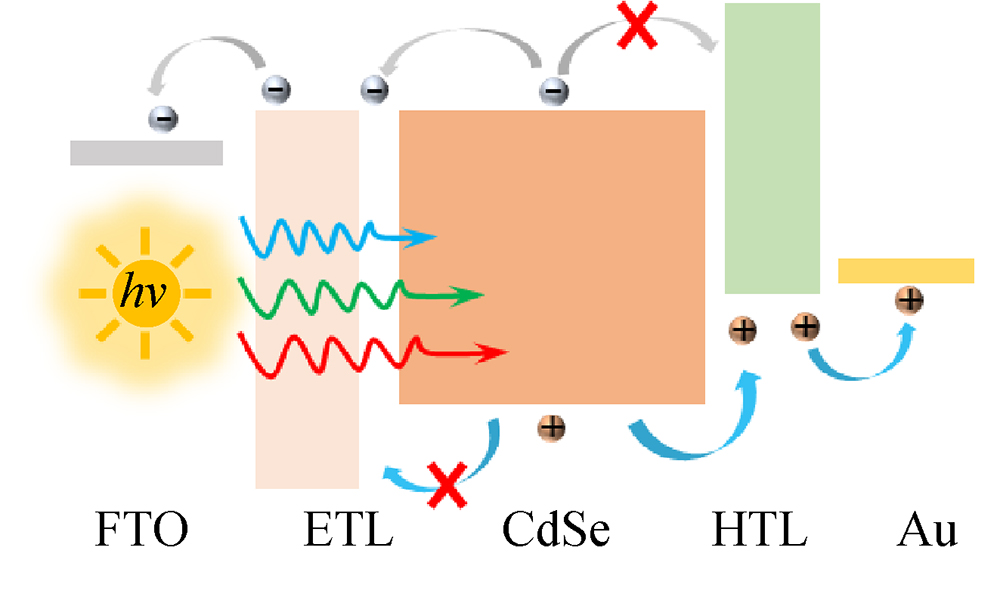The fluorine doped tin oxide (SnO
2:F, FTO) transparent conductive glasses were purchased (OPV Tech). The thickness, transmittance, and sheet resistance of the FTO layer are 500 nm,>85% (400–800 nm), and 8 Ω/sq, respectively. FTO was rinsed in the ultrasonic cleaning machine by the following solvent: detergent, acetone, isopropanol, ethyl alcohol, and deionized water in sequence. Titanium dioxide (TiO
2) thin film was prepared using spray pyrolysis. The precursor solution used for spraying consisted of titanium diisopropoxide bis (acetylacetonate) (75 wt.% in isopropanol, Aladdin) and anhydrous ethanol (99.99% purity, Aladdin) in a ratio of 1:9. While spraying, the temperature and constant flow rate were 450°C and 12 mL/min, respectively. First, TiO
2 was annealed on the hotplate at 450°C for 30 min in ambient air. Zinc oxide (ZnO) was prepared based on a previously reported solgel method [
18]. 0.4-mol/L zinc acetate dihydrate and monoethanolamine (1:1 molar ratio) were dissolved in 2-methoxy ethanol solution and stirred at 60°C for 12 h. Then, the ZnO sol was dipped onto the FTO and spun at 3000 r/min for 30 s, following the annealing treatment at 500°C for 20 min. Cadmium sulfide (CdS) film was prepared via chemical bath deposition for 16 min on the substrate. Then, the CdS film was treated with 20 mg/mL cadmium chloride (CdCl
2) absolute methanol solution via spin coating and annealed on the hotplate at 400°C for 6 min in ambient air. Rapid thermal evaporation (RTE, OTF-1200X-RTP, Hefei) was used for depositing CdSe films by evaporating CdSe powder (99.995% purity, Alpha). During the specific operation process: 0.5-g CdSe powder was evenly placed on the 5 cm × 5 cm × 0.1 cm quartz glass in the center of the RTE. The substrate was put 10 mm above the source. To maintain the low temperature of the substrate, a graphite block with a large heat capacity was placed on top of it. After pumping the pressure below 1 Pa, we first preheated the RTE system at 400°C for 900 s, then rapidly increased the temperature to 800°C at a ratio of 20°C/s and kept it for different periods (50, 100, and 150 s) to deposit the CdSe films.








